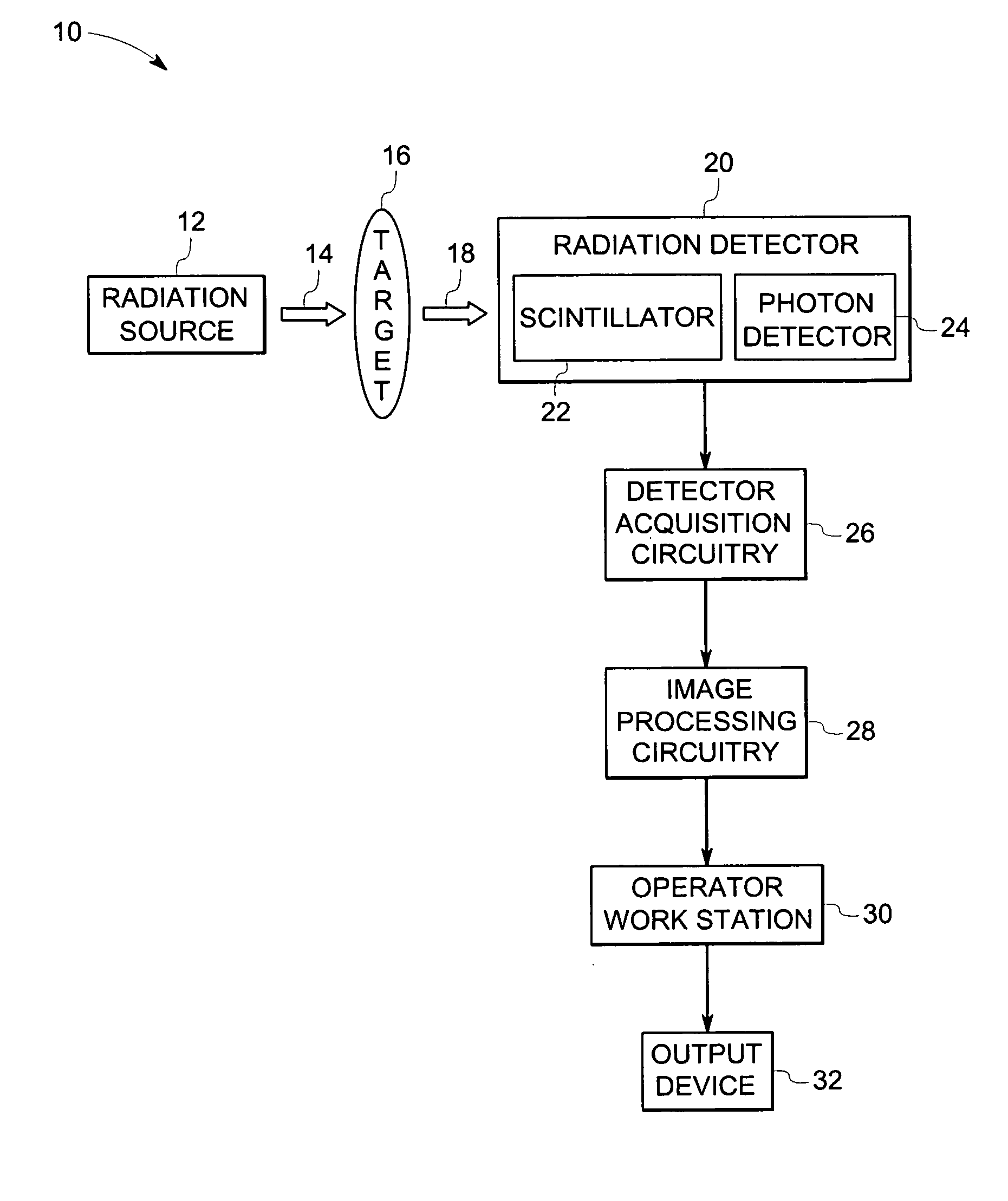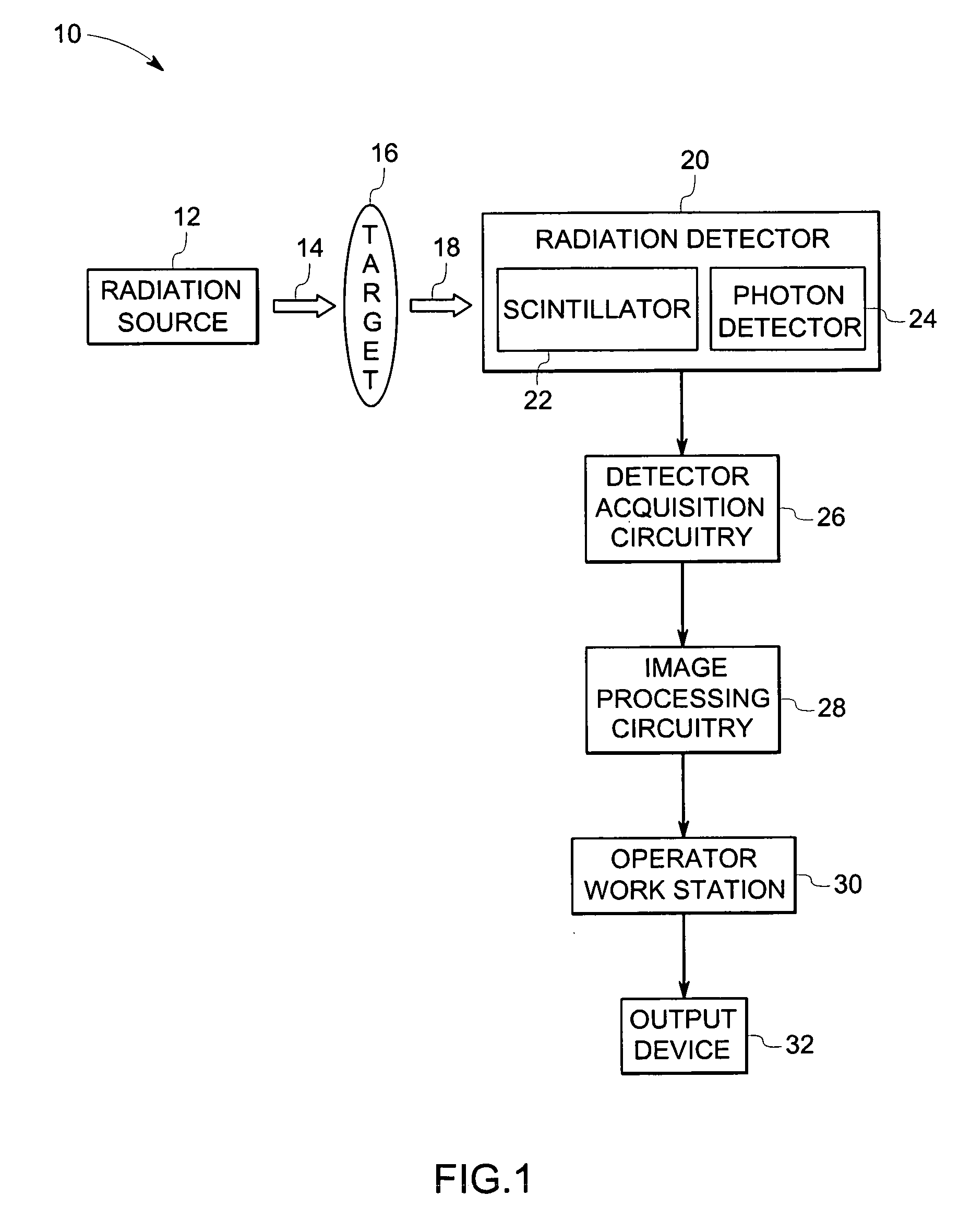High-density scintillators for imaging system and method of making same
a scintillator and high-density technology, applied in the field of imaging systems, can solve the problems of difficult fabrication, high cost of scintillator materials, and inability to meet the requirements of large-area detector assemblies,
- Summary
- Abstract
- Description
- Claims
- Application Information
AI Technical Summary
Problems solved by technology
Method used
Image
Examples
Embodiment Construction
[0017]FIG. 1 illustrates an exemplary radiation-based imaging system, such as positron emission tomography, in accordance with certain embodiments of the present technique. In the illustrated embodiment, the imaging system 10 includes a radiation source 12 positioned such that a major portion of the radiation 14 emitted from the radiation source 12 passes through the target 16, such as an animal, or a human, or a baggage item, or any target having internal features or contents. In certain embodiments, the radiation 14 may include electromagnetic radiation such as, x-ray radiation, or beta radiation, or gamma radiation. A portion of the radiation 14, generally termed as attenuated radiation 18, passes through the target 16. More specifically, the internal features of the target 16 at least partially reduce the intensity of the radiation 14. For example, one internal feature of the target 16 may pass less or more radiation than another internal feature.
[0018] Subsequently, the attenu...
PUM
| Property | Measurement | Unit |
|---|---|---|
| pressure | aaaaa | aaaaa |
| temperature | aaaaa | aaaaa |
| energy | aaaaa | aaaaa |
Abstract
Description
Claims
Application Information
 Login to View More
Login to View More - R&D
- Intellectual Property
- Life Sciences
- Materials
- Tech Scout
- Unparalleled Data Quality
- Higher Quality Content
- 60% Fewer Hallucinations
Browse by: Latest US Patents, China's latest patents, Technical Efficacy Thesaurus, Application Domain, Technology Topic, Popular Technical Reports.
© 2025 PatSnap. All rights reserved.Legal|Privacy policy|Modern Slavery Act Transparency Statement|Sitemap|About US| Contact US: help@patsnap.com



